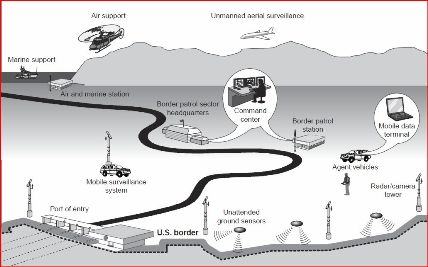Former DHS Official Recommends Reorganizing the Department
The Department of Homeland Security (DHS) should begin a fundamental reorganization by developing a unified field structure for its components and separating operational and acquisition responsibilities, according to a former DHS official.
"I believe...no unified command structure exists for DHS components in the field,"Paul A. Schneider (.pdf), former deputy secretary at DHS and now a principal at The Chertoff Group, a homeland security consulting group, told lawmakers. "Each component has individual field structures with unique geographic boundaries and independent chains of command. These lines of authority do not converge until they reach the Secretary/Deputy Secretary."
Schneider explained that his recommendation is based off of a similar reorganization that the Department of Defense undertook in the late 1980s and early 1990s. In 1986, President Reagan signed theGoldwater-Nichols Department of Defense Reorganization Act, which eased interservice rivalries, improved interoperability between U.S. military branches, and allowed for shared procurement of military technologies, such as stealth and smart weapons.
Schneider's testimony came as part of ahomeland security subcommittee hearing investigating whether DHS was effectively implementing a strategy to counter emerging threats. One of the questions underlying the hearing, according to Chairman Michael T. McCaul (R-TX), was why it was taking DHS so long to become "One DHS?"
Created in the aftermath of 9-11, DHS's executives have had to transform 22 separate agencies into one department, a massive undertaking the Government Accountability Office (GAO) in 2003 described as at high risk for fraud, waste, abuse, and mismanagement. Nearly a decade later, creating one DHSis still on the GAO's high-risk listas the department has grown to become the third largest agency in the federal government with 200,000 employees and $56 billion in budget authority without solving its management problems.
Those problems according to McCaul, are best epitomized by the Secure Border Initiative's virtual fence, a boondoggle that cost taxpayers $ 1 billion with little return on investment. "[DHS] Secretary [Janet] Napolitano will certainly not attain her goal of 'One DHS' until financial and management systems are integrated," he said.
Schneider also said DHS component agencies need to be relieved of their acquisition responsibilities.
"The basis for this recommendation is simple," he said. "The majority of DHS operational people wears badges and carry guns. Is it smart to hold a major component head, for example the head of CBP, with approximately 65,000 people, responsible for his 24X7 day law enforcement responsibilities around the world and at the same time, ask him to be responsible for developing and fielding complex systems that must integrate with other complex systems?"
Separating acquisition from operations is a lesson the miltiary learned long ago, said Schneider. "That is why the Air Force's Air Combat Command deploys planes and does not develop the F-35, and why the Navy's COMSUBLANT operates submarines but does not develop the Virginia Class Submarines."
Rep. Yvette Clark (D-NY) asked skeptically whether DHS was ready for such a dramatic Goldwater-Nichols-type reorganization.
"It is ready," replied Schneider, adding, "I'm not sure there is any right time."
